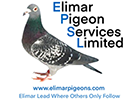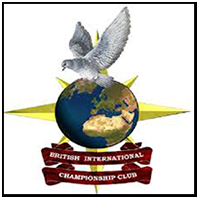The Gareth Watkins' Norman Southwell Series Part 3...
RICHARD WITHALL of Chichester
40 years of success at the distance with his Southwell-based family
As the title of this report suggests, Richard has enjoyed an extended and consistent run of success in the long hard races on the north road between the north coast of Scotland and the south coast of England. This success has been achieved with a predominantly Southwell based family, to which over the years, Richard has added selective introductions from some of England’s top long distance lofts. These introductions by the way, always being made from other successful old English based families.

26th Open BICC Brive
The type of pigeon that Richard has developed is true to the original Southwell type being small to medium in size with good skeletal structure producing a light and buoyant well muscled athlete with superb feather quality. The secondary feathers sit square to the body of the pigeon and the last four primaries are extremely supple with a definite curve away from the body at their tips. As with the original Southwells, the predominant colours are dark chequers and dark grizzles plus the occasional dark velvet. All have rich strong coloured irises of varying colours. Because of their physical type they need very little roadwork to keep them in trim and rarely “go to fat” no matter how much food to which they have access.

15th Open BICC Dax
Richard obtained his foundation birds years ago by selectively breeding from top performers at the distance and birds closely related to these. From these he has developed the present day team of tough and durable long distance racers which are equally at home on north or south routes against National class competition. As mentioned earlier, select introductions have occasionally been made over the years. These are first tested at the distance and if found suitable, are then crossed into the base bloodlines.

5th Section, 93rd Open NFC Saintes
The birds are housed in an extensive range of lofts arranged in a U shape within Richard’s lovely garden which is filled with trees and shrubbery. The main racing loft faces south-east and is light and well ventilated but also bone dry, an essential factor in any loft, but even more so in Richard’s case as the floor of the loft is covered with a layer of deep litter. The loft has seven sections plus a corridor running along its length. Although a deep litter floor dressing is employed the perches are cleaned daily to ensure that the risk of infection is kept to a minimum. Richard does not advocate the regular use of antibiotics and finds that cinnamon powder administered at the rate of 1 teaspoon per gallon of water is often effective against young bird sickness. Cider vinegar [1 teaspoon/pint] is also effective against this modern day scourge. Another natural antibiotic used by Richard is garlic, which is simply added to the drinkers in the form of freshly peeled cloves.

Richard holding 1st Portsmouth Fed Thurso, 550 miles.
The Withall loft generally winters around 100 birds in total and these are fed a mixture of equal parts beans, maize and barley throughout the winter once the moult has been completed. This mixture is hand fed until the birds start to leave the barley at which stage feeding is stopped, ensuring the pigeons get enough to eat but not enough to waste.
Richard races both widowhood cocks and some natural mated pairs. During the racing season the widowers are hand fed a good widowhood mix twice daily. This is given to each individual cock in pots in each nestbox. A light feed is given after morning exercise with a heavier feed of the same mixture following the evening exercise period. A little linseed and hemp are also fed to the widowers plus peanuts in the build up to a long distance race. The widowhood cocks are allowed to take voluntary exercise twice daily with no forcing.

Youngsters and yearlings are brought along quietly and are not over extended but are educated carefully so that they gain experience before being sent to the distance races. Young bird racing is not taken seriously and the best specimens that Richard believes will be his future top performers are stopped fairly early in the season. By using this softly softly approach Richard has found that the experience the birds gain in their first two seasons’ education programme stands them in good stead for their future careers as long distance racers. As two year olds the birds are not generally sent beyond 470 miles, but at three years old and older, having gained a wealth of experience, they are expected to carry the flag in the long distance races of Thurso 550 miles and Lerwick 647 miles.

The small team of natural hens that are raced are entered in selected races in preparation for their big test and also get the occasional private training toss in between to ensure that they are entered in their target race in the peak of condition, usually sitting eggs 10 – 14 days at time of basketting. Occasionally a small youngster of 8-10 days is placed with a hen the night before basketting and this has often paid dividends on race day.


















